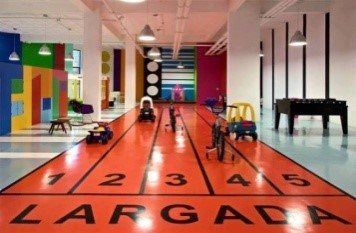The reality of kindergartens spaces and how well they respond to children’s needs and develop their abilities.
Case Study: Batna City
Keywords:
Childhood, Preschool, Child, Kindergartens, Child Needs, Batna cityAbstract
During his life, The child passes through many stages and at each stage he acquires certain habits, and abilities that help him to build his personality and form his future. The most important is early childhood, which greatly affects him in different dimensions. Because the quality of the environment in which the child lives, Kindergartens play an important role in his growth according to many considerations. But how responsive is the design of kindergartens spaces and their framing in Algerian cities to the children’s needs? Our research paper seeks to find out the impact of these spaces on children and we concluded that these spaces mostly do not respond to the children’s needs and they have negative effects that can not be controlled after that. We have adopted the investigation method using the observation in situation, questionnaire addressed to educators and parents, interview for the managers and kindergartens children (the sample) in Batna city.
Downloads
References
(1)-محمود عبد الرزاق شفشق، هدى محمود الناشف (2000)، إدارة الصف المدرسي، دار الفكر العربي، القاهرة. ص43
(2)-ليونيسيف (2015)، "دليل حقوق الطفل"، وزارة التضامن الوطني والأسرة وقضايا المرأة، الجزائر.ص 13
(3)- محمد بن محمد أبي حامد الغزالي(2005)، إحياء علوم الدين، دار ابن حزم، بيروت. ص 955
(4)-زكرياء الشربيني، يسرية صادق (2000)، نمو المفاهيم العلمية للأطفال، برنامج مقترح وتجارب لطفل ما قبل المدرسة، دار الفكر العربي، القاهرة. ص134
(5)-سمية بدر الدين بحرور (2012)، مرحلة الطفولة المبكرة: علم نفس الطفل، الاكاديمية العربية البريطانية للتعليم العالي، القاهرة. ص3
(6)-حامد عبد السلام زهران (1976)، علم نفس النمو (الطفولة والمراهقة)، ط 4، دار المعارف، القاهرة. ص 121- 122
(7)-عبد الرحمان الوافي(2008)، الانسان من الطفولة إلى الزواج، دار هومة للطباعة والنشر والتوزيع، الجزائر العاصمة.ص30-32
(8)-محمد مصطفى زيدان (1975)، دراسة سيكولوجية الطفل، ديوان المطبوعات الجامعية، الجزائر. ص 61
(9)-سهير احمد كامل، شحاتة سليمان محمد (2000)، تنشئة الطفل وحاجاته بين النظرية والتطبيق، مركز الإسكندرية للكتاب، الاسكندرية. ص135
(10)-أمزيان وناس (2014)، الحاجات المختلفة للطفل والمواصفات الضرورية لروضة الأطفال، السجل العلمي للملتقى الدولي: المدينة والطفل، 26-27 أكتوبر 2014، جامعة باتنة. ص147-148
(11)-حامد عبد السلام زهران (1976)، علم نفس النمو (الطفولة والمراهقة)، ط4 ، دار المعارف، القاهرة. ص 271
(12)-القانون التوجيهي للتربية الوطنية 08/04 المؤرخ في 23 جانفي 2008، النشيرة الرسمية لوزارة التربية الوطنية – فيفري 2008. ص 74
(13)-بورصاص فاطمة الزهراء (2009)، تقييم التربية التحضيرية الملحقة بالمدرسة الابتدائية في الجزائر، رسالة ماجستير في علم النفس التربوي، جامعة قسنطينة. ص97- 99
(14)-عجينة سيف الدين )2016(، دور تصميم الفضاء التحضيري في نمو الطفل )5-6 سنوات( دراسة حالة مدينة المعذر- باتنة ، مذكرة ماستر 2، معهد الهندسة المعمارية والعمران، جامعة باتنة 1. ص ص24 – 31
















